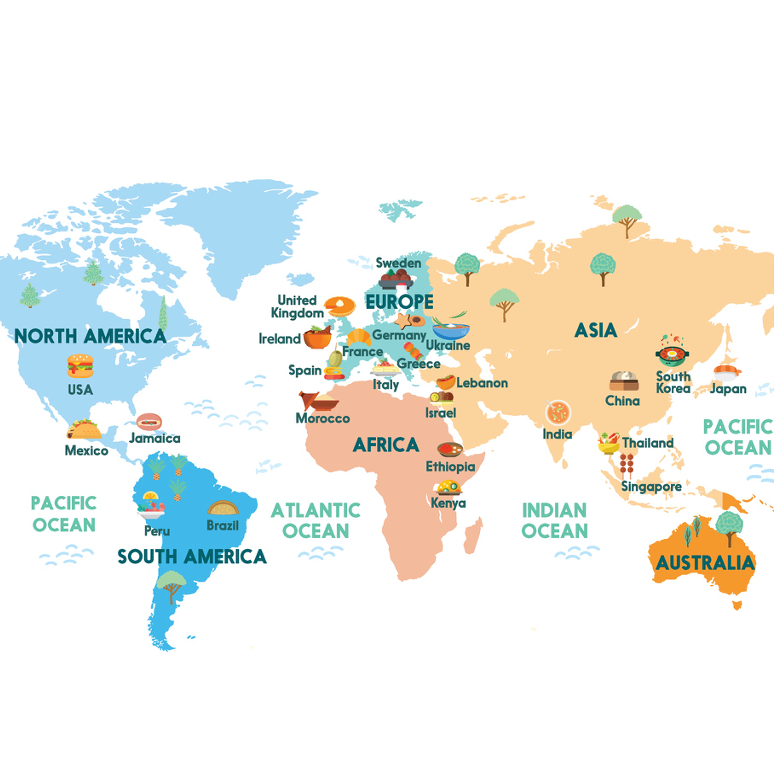Tea has been a part of China since ancient times. In fact, China is where tea came from. The plants that produce tea leaves (Camellia sinensis) have grown wild in China for as far back as history can tell!
Let's explore the Chinese origins of this delicious beverage!
According to one legend, in 2732 BC an emperor named Shen Nong first discovered tea when leaves from a nearby tree blew into his pot of boiling water. He noticed a lovely scent wafting up from this accidental concoction.
Curious, he decided to drink some. Delighted by the accidental brew, he introduced it to others. A love of tea developed and eventually spread all over the globe.
In fact, tea is the second most consumed beverage in the whole world!
The Divine Farmer Discovers Tea
Another version of the legend says that Shen Nong was a “divine farmer.” He had spent the day wandering in the forest trying to find herbs and grains that he could eat.

Well, he made a few mistakes while he was testing things out. This resulted in him poisoning himself! Which is a really bad way to find out if something is edible or not.
As Shen Nong lay on the forest floor, a leaf from a nearby tree fell off the tree and drifted into his mouth.
He chewed on it for a moment… and it saved him!
That legend revolves around the medicine qualities of tea leaves. While there aren’t any teas which will cure a poisoning, the story highlights the value of tea to the people and history of China.
Original Uses For Tea
Regardless of how tea was discovered, tea leaves have been used for centuries in China.
- Initially, religious ceremonies and rituals incorporated tea as an offering.
- People ate tea leaves like a vegetable.
- People also used tea leaves as medicine. (Which is still popular today in Chinese medicine.)

Archeological findings suggest that tea has been cultivated in China as early as 4,000 BC! And China is still the world’s largest producer of tea today. That’s a lot of growing experience.
Drinking tea as a beverage wasn’t really how tea was used until the Tang (618-907) and Song (960-1279) Dynasties. During the Tang Dynasty, tea became one of the Seven Essentials of Daily Life.
Rather than being enjoyed exclusively by nobility, everyone enjoyed drinking tea.
Plantations of cultivated tea trees were found all over China. Tea, along with silks and porcelain, became the biggest export of China during the age of the Silk Road. From there, along the Silk Road, tea was introduced to Africa, India, and Europe.

All true tea comes from the same plant. The youngest leaves from the plant make what is known as white tea. Leaves that have been on the tree a bit longer produce green tea.
Different flavors of tea were discovered when the leaves were allowed to dry and age for a while in an attempt to preserve them. The aging produced an oxidized or fermented tea leaf, and a much darker brew. These aged teas are called oolong tea and black tea.
There were even strict rules in ancient China about picking tea leaves! The rules stated who could pick the tea and when and how the picking was done.
Simple Brew
Tea as a hot drink is prepared in many different ways. Most often, the young leaves are picked and allowed to dry. Added to a cup and covered with boiling water, the tea steeps under cover of a tightly-fitting lid to capture all the delicious aroma and flavor.

More Complex Tea Making
Tea leaves can also be dried out and ground into a fine powder and compressed into a little cake. This cake is placed into a pot and crushed with a mortar. Then boiling water is poured over the powdered leaves to make the tea.

The dried and ground form of tea is still found today. It’s called Matcha. And it’s been around since the Tang Dynasty! Matcha powder can be used for tea, added to smoothies, and even baked into some yummy cookies. (Recipe below!)
Long ago (or much more recent, depending on your source) artisans in the Yunnan province of China used tea as an art form.

The artisans used cotton thread to tie bundles of tea leaves and fragrant flowers together.

Then, when the artist poured hot water over the bundle, it "bloomed" to create a beautiful submerged flower arrangement.
Back then, no one drank the flower-tea since it was really bitter. But today's blossoming tea is both beautiful and delicious.
And a tea bag? That invention didn’t come around until the turn of the 20th century as a relatively “new” idea in the long history of tea. Tea today can come as loose-leaf, leaf tea in bags, or powdered tea in bags.
Special Rules Around Making Tea

In China, there are rules of etiquette to having tea. For instance, every house has a special pot and cups for making and serving tea. The cups were called tea bowls by the English. Handles on tea cups weren’t added until around 1750.
Authors wrote books on how to brew tea and how to properly perform a tea ceremony. There were rules about how and when to serve tea, not to mention who among the guests was served first.
The ceremony and etiquette of tea is still followed in the many tea houses found throughout China.
Tea has been enjoyed in China for a very long time, and once the rest of the world found out about it, it spread to every corner of the globe!
Brewing and enjoying a cup of tea is a neat way to experience a bit of history.
When Is Tea Not Tea?
Other hot drinks have been called "tea", but unless the leaf comes from the actual tea plant, the resulting beverage isn't really tea.
Brewing herbs, spices, and other edible plants in hot water produces something called a tisane or herbal tea. While not true teas, they're just as delicious! Some examples of popular herbal teas are:
- Lavender
- Hibiscus
- Lemongrass
- Mint
- Chamomile
- Cinnamon
- Rooibos (red bush tea from South Africa)

Another way to enjoy tea… is to use tea in cookies! Try out these Green Tea Cookies:
Bonus Recipe - Green Tea Cookies!
Grab an adult, a hand-held mixer, and a bowl!
Pre-heat the oven to 325 degrees Fahrenheit.
Blend in the mixing bowl until light and fluffy:
- 1 cup Unsalted Butter, make sure it’s soft
- ¾ cup White Sugar, plus a little more to sprinkle on the cookies
In a separate bowl, combine:
- 2 cups Flour, all-purpose works
- 2 tablespoons, plus 1 teaspoon Green Tea Powder, get a good culinary-grade for an awesome green color (You can also use the powder-not leaves-from 2 bags of green tea, but your cookies won't come out as green!)
Add the flour mixture to the butter mixture a little at a time until all the flour is mixed in. Then roll the dough out on a piece of parchment paper to about ¼ inch or slightly thicker.
Cut out shapes with cookie cutters and place them on a baking sheet lined with parchment paper. Sprinkle lightly with extra sugar, if you so desire.
Bake in the preheated oven for 20 minutes, or until they’re lightly browned.
Get creative! You can substitute any flavor of tea as long as you use powdered tea, or plan to have an adult help you use a food processor or blender to create your own powder from loose leaf tea.
Cool them off on a wire rack and enjoy them with a cup of tea for a delicious afternoon treat!
Or save them for dessert after you enjoy one of the amazing dishes from our China box or any other adventure you choose from eat2explore!







